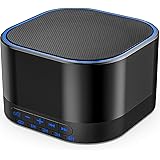Unlock Deeper Sleep: Your Guide to Guided Sleep Meditation for Rapid Relaxation
Did you know that over one-third of adults in the United States report getting less than the recommended amount of sleep? This widespread issue highlights the critical need for effective relaxation techniques. Fortunately, tools like the guided sleep meditation video above offer a powerful solution, designed to help you calm your mind and body, facilitating deep relaxation and aiding you to fall asleep in under 10 minutes.
This article expands upon the principles introduced in the video, providing a comprehensive understanding of how guided sleep meditation works and how you can maximize its benefits. We will delve into the science behind these techniques, offering practical insights to help you cultivate consistent, restful nights. Consequently, you can transform your sleep habits and enhance overall well-being.
The Essential Role of Restful Sleep in Your Life
Sleep is not merely a period of inactivity; it is an active and vital process for both physical and mental health. During sleep, your body repairs itself, consolidates memories, and regulates hormones. Inadequate sleep, conversely, can lead to numerous health issues, including decreased cognitive function, impaired immunity, and heightened stress levels.
Stress and anxiety are significant contributors to poor sleep quality, often creating a vicious cycle. Feeling overwhelmed can make it difficult to unwind, while lack of sleep exacerbates stress. A guided sleep meditation provides a structured pathway to break this cycle, fostering an environment conducive to deep rest.
Decoding Your Guided Sleep Meditation Journey
The guided meditation in the video walks you through a series of calming steps. Each stage is thoughtfully designed to progressively relax your mind and body, preparing you for a peaceful night. Understanding the purpose behind each instruction can deepen your practice and enhance its effectiveness.
Finding Your Sanctuary: The Setup
The journey to deep sleep begins with your environment. Finding a comfortable and quiet place to lie down is paramount. This simple act signals to your brain that it is time to transition from the day’s demands to a state of rest.
Imagine if you tried to meditate in a noisy, brightly lit room; true relaxation would be challenging. Therefore, prioritizing comfort and minimizing distractions creates the optimal foundation for your guided sleep meditation practice.
The Power of Breath: Calming Your Nervous System
Deep breathing is a cornerstone of any relaxation practice, including this guided sleep meditation. When you take a deep breath in through your nose and slowly exhale through your mouth, you activate your parasympathetic nervous system. This system is responsible for your body’s “rest and digest” functions.
Conversely, shallow, rapid breathing can keep your body in a “fight or flight” state. By consciously slowing your breath, you send a clear signal to your body to relax, reducing heart rate and blood pressure. Furthermore, focusing on your breath helps to anchor your mind in the present moment, diverting attention from racing thoughts.
Body Scan for Tension Release: A Soothing Light
The meditation guides you to notice areas of tension or discomfort and imagine a warm, soothing light washing over them. This technique is known as a body scan, a powerful mindfulness practice. It systematically brings awareness to different parts of your body, allowing you to identify and release stored physical tension.
Many people unknowingly carry tension in their shoulders, jaw, or stomach. By acknowledging these areas and visualizing them melting away, you actively participate in your own physical relaxation. Consequently, your body becomes more pliable and ready for sleep.
Visualization: Crafting Your Dream World
Visualizing yourself in a peaceful, natural environment like a beach or a forest is a highly effective psychological tool. This mental imagery technique transports your mind away from daily stressors to a place of tranquility. The video emphasizes that this place can be real or imagined, highlighting the flexibility of this exercise.
Imagine feeling the soft grass beneath your feet or the gentle sun on your skin; these sensory details enhance the immersive experience. This practice engages your imagination, which can be a powerful ally in moving past persistent thoughts that often keep us awake. It fosters a sense of peace and security, essential for drifting off into deep sleep.
The Act of Letting Go: Releasing the Day
The meditation encourages you to “let go and be at peace,” casting off any remaining tension or stress. This step is crucial for transitioning from wakefulness to sleep. Often, we carry the day’s worries into bed, which can hinder the ability to fall asleep quickly.
Giving yourself permission to simply “be” without judgment allows the mind to quiet down. This intentional release of control helps to clear mental clutter, paving the way for restful sleep. It is an acknowledgment that your responsibilities can wait until morning.
Beyond the Meditation: Cultivating Lasting Sleep Habits
While guided sleep meditation is incredibly effective, integrating it with healthy sleep hygiene practices can significantly enhance your overall sleep quality. Consistent effort in these areas ensures that your body and mind are optimally primed for rest every night.
Creating a Sleep-Friendly Environment
Your bedroom should be a sanctuary for sleep. Ensure it is dark, quiet, and cool. Blackout curtains can block intrusive light, and earplugs or a white noise machine can mitigate disruptive sounds. Furthermore, maintaining a room temperature between 60-67 degrees Fahrenheit is often recommended for optimal sleep.
Establishing a Consistent Routine
Going to bed and waking up at the same time each day, even on weekends, helps to regulate your body’s internal clock, also known as your circadian rhythm. A consistent routine strengthens this rhythm, making it easier to fall asleep and wake up naturally.
Limiting Stimulants and Screen Time
Avoid caffeine and heavy meals close to bedtime, as they can interfere with your sleep cycle. Equally important is reducing exposure to electronic screens (phones, tablets, computers, TVs) at least an hour before sleep. The blue light emitted by these devices can suppress melatonin production, a hormone critical for sleep.
Why Guided Sleep Meditation Works So Effectively
The effectiveness of guided sleep meditation stems from its ability to address both the physiological and psychological barriers to sleep. It provides a structured approach to calming the nervous system and redirecting mental activity away from stress-inducing thoughts.
The Mind-Body Connection
Guided meditation leverages the powerful connection between your mind and body. By focusing your mind on calming instructions and imagery, your body responds by relaxing. This deliberate practice helps to switch your body from a state of alertness to one of readiness for sleep.
Reducing Cognitive Arousal
One of the primary reasons people struggle to fall asleep is cognitive arousal—a busy or racing mind. A guided sleep meditation provides a focal point, a gentle anchor that prevents your thoughts from spiraling. It gives your mind a specific, calming task to concentrate on, rather than replaying the day’s events or worrying about the future.
Training Your Brain for Rest
Regular practice of guided sleep meditation can train your brain to associate certain cues (the narrator’s voice, deep breathing, visualization) with relaxation and sleep. Over time, your response becomes quicker and more automatic, making it easier to drift into a deep and restful sleep. This consistency reinforces positive sleep patterns and can significantly improve your overall sleep quality.
Embracing this practice can truly transform your nights. By consistently engaging with guided sleep meditation, you empower yourself to achieve profound relaxation and experience the restorative benefits of deep sleep regularly.








